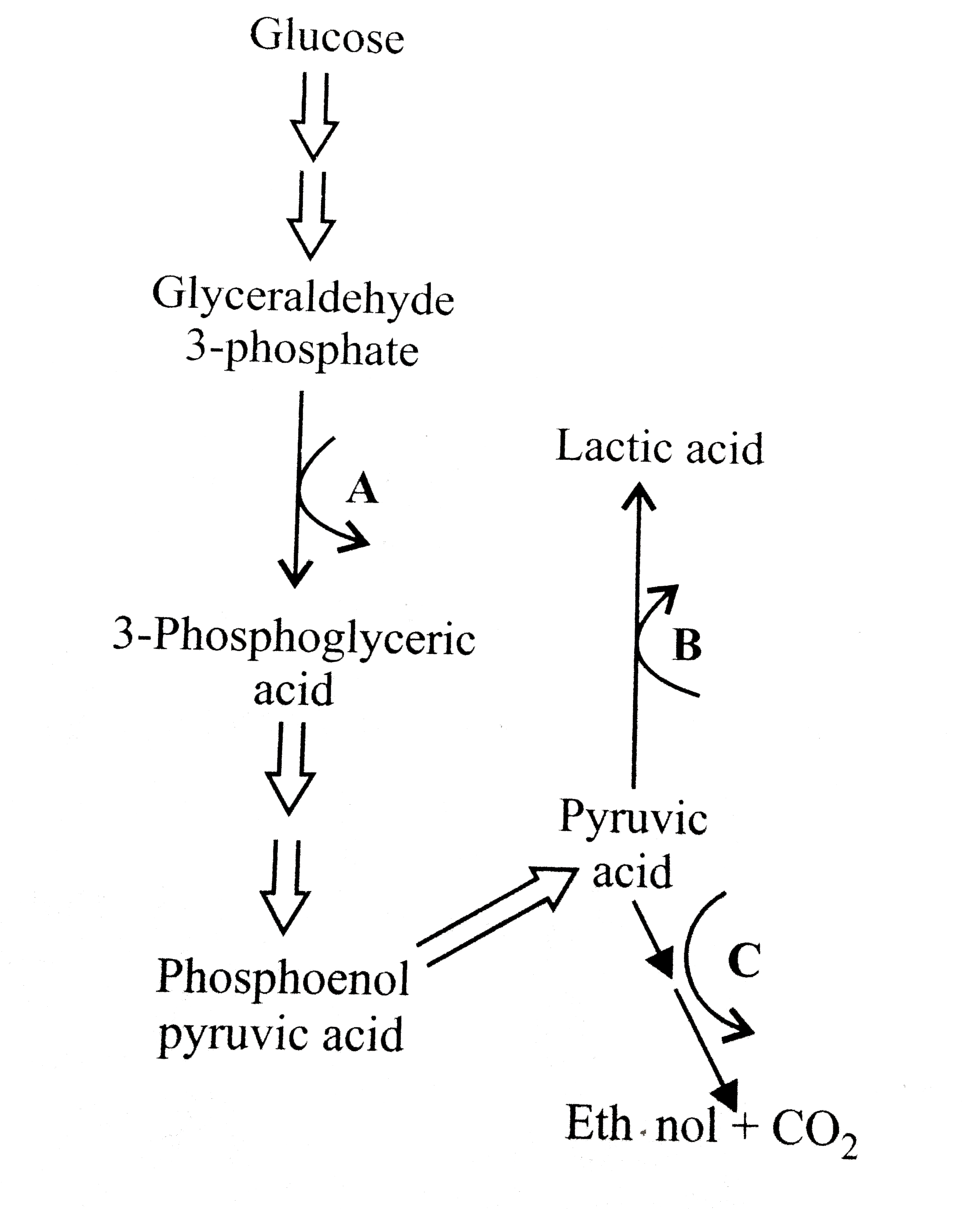How many molecules of NADH are left at the end of anaerobic respiration
(a) 2
(b) 4
(c) 6
(d) 0
2
4
6
0
The correct Answer is:D
To determine how many molecules of NADH are left at the end of anaerobic respiration, we can follow these steps:
1. Understanding Anaerobic Respiration:
- Anaerobic respiration occurs in the absence of oxygen. In this process, glucose is converted into pyruvate through glycolysis.
2. Glycolysis and NADH Production:
- During glycolysis, for each molecule of glucose that is broken down, 2 molecules of NADH are produced. This is a crucial step in both aerobic and anaerobic respiration.
3. Pathway After Glycolysis:
- In aerobic respiration, pyruvate would enter the Krebs cycle (TCA cycle) to further produce ATP and NADH. However, in anaerobic respiration, pyruvate does not enter the Krebs cycle.
4. Fermentation Process:
- Instead, pyruvate undergoes fermentation. There are two main types of fermentation: alcoholic fermentation (in yeast) and lactic acid fermentation (in animal cells).
- During fermentation, pyruvate is converted into either ethanol (in yeast) or lactic acid (in animal cells).
5. NADH Usage in Fermentation:
- The conversion of pyruvate to ethanol or lactic acid requires the use of NADH. Specifically, NADH is oxidized back to NAD+ in the process, which is essential for glycolysis to continue.
6. Net Result of NADH:
- Since the NADH produced during glycolysis is used up in the fermentation process, there are no NADH molecules left at the end of anaerobic respiration.
7. Conclusion:
- Therefore, the answer to the question of how many molecules of NADH are left at the end of anaerobic respiration is 0.
Final Answer:
(d) 0
---
- Anaerobic respiration occurs in the absence of oxygen. In this process, glucose is converted into pyruvate through glycolysis.
- During glycolysis, for each molecule of glucose that is broken down, 2 molecules of NADH are produced. This is a crucial step in both aerobic and anaerobic respiration.
- In aerobic respiration, pyruvate would enter the Krebs cycle (TCA cycle) to further produce ATP and NADH. However, in anaerobic respiration, pyruvate does not enter the Krebs cycle.
- Instead, pyruvate undergoes fermentation. There are two main types of fermentation: alcoholic fermentation (in yeast) and lactic acid fermentation (in animal cells).
- During fermentation, pyruvate is converted into either ethanol (in yeast) or lactic acid (in animal cells).
- The conversion of pyruvate to ethanol or lactic acid requires the use of NADH. Specifically, NADH is oxidized back to NAD+ in the process, which is essential for glycolysis to continue.
- Since the NADH produced during glycolysis is used up in the fermentation process, there are no NADH molecules left at the end of anaerobic respiration.
- Therefore, the answer to the question of how many molecules of NADH are left at the end of anaerobic respiration is 0.
(d) 0
Topper's Solved these Questions
Similar Questions
Knowledge Check
- Question 1 - Select One
What does A,B and C depict in the given pathways of anaerobic respiration ?
 AABCNADH+H+→NAD+NAD+→NADH+H+NAD+→NADH+H+BABCNADH+H+→NAD+NADH+H+→NAD+NAD+→NADH+H+CABCNAD+→NADH+H+NADH+H+→NAD+NADH+H+→NAD+DABCNAD+→NADH+H+NADH+H+→NAD+NAD+→NADH+H+
AABCNADH+H+→NAD+NAD+→NADH+H+NAD+→NADH+H+BABCNADH+H+→NAD+NADH+H+→NAD+NAD+→NADH+H+CABCNAD+→NADH+H+NADH+H+→NAD+NADH+H+→NAD+DABCNAD+→NADH+H+NADH+H+→NAD+NAD+→NADH+H+
How many ATP molecules are produced by one mole of glucose in anaerobic respiration?
View SolutionDefine cellular respiration. In aerobic respiration, name various steps involved to complete it in a sequential order. How many molecules of ATP are formed in the aerobic respiration of one molecule of glucose?
View SolutionHow many molecules are there in 22.4 L of H2 at STP?
View Solutionin how many steps CO2 is released in aerobic respiration of pyruvic acid
View SolutionHow many FADH2 molecules will be produced from two molecules of glucose in aerobic respiration ?
View SolutionHow many circles can be drawn to pass through three non-collinear points
View SolutionHow much of the energy of a glucose molecule is released in anaerobic respiration ending with fermentation?
View Solution
